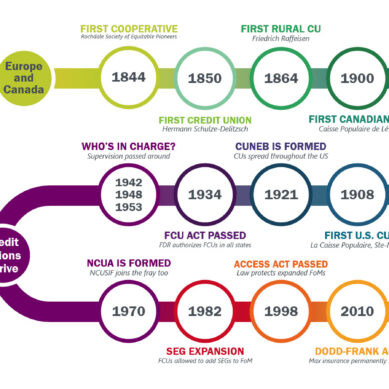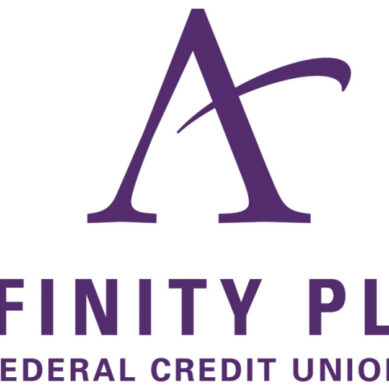
In previous financial literacy articles I have written, I have given a brief overview of net worth, also called capital worth (though they are calculated slightly differently).
In layman’s terms, a credit union’s net worth ratio is a key indicator of how much capital it has at its disposal to deal with unexpected losses or to use for future growth. This means that having too little capital, resulting in a low net worth, could spell trouble for the credit union. For this reason, the NCUA closely monitors credit unions’ net worth, making up the ‘C’ in the CAMELS rating system.
If being under-capitalized is a bad thing, is it possible to be too well capitalized?
A brief recap of the net worth ratio
Before we address the question of whether it’s possible to have too high a net worth ratio, let’s get a more in depth reminder of what net worth is.
Net worth is calculated by taking the total assets of the credit union (e.g. cash, investments, loans, property) and subtracting the total liabilities (e.g. deposits, borrowed funds, debts, etc.) from that amount. To then get the net worth ratio, the resulting net worth is divided by the total assets.
Going by the NCUA’s standards, a net worth ratio of 7% or higher is considered “well capitalized” and 6% is considered “adequately capitalized.” Dipping below that and the credit union will be classified as “undercapitalized,” “significantly undercapitalized,” and “critically undercapitalized.”
Most credit unions will not risk the attention of the NCUA by trying to straddle that 7% net worth ratio requirement though, instead choosing to build in a buffer. And with the recently implemented risk-based capital (RBC) ratio requirements (which raise the capital requirements for riskier investments), credit unions have an additional measure to monitor, though this is reserved for “complex” credit unions.
As of December 2022, NCUA reports a system-wide net worth ratio of 10.74%, up from 10.26% one year prior. On top of that, 291 complex federally insured credit unions (those with total assets over $500M) reported under the RBC framework to the tune of 15.15%, well over the 10% requirement.
This means that as a whole, the system has built in a healthy buffer in its capital requirements.
Can you have too much of a good thing?
When we consider what the point of net worth is, to safeguard the credit union from risk, we then have to ask if it is possible to be too safe.
What does a higher net worth provide the credit union? For one, it’s a buffer against unexpected losses in times of economic stress. On top of that, it is a free source of funds. I.e. if you want to make new loans, but your credit union is already severely loaned out, you have to look to outside sources of liquidity to fund those loans, which adds to your costs/liabilities. If, however, you have a high net worth, it probably means you have the funds available to loan out without additional costs.
But a really high net worth ratio can be a sign of something else: your credit union is not reinvesting its capital into ways to help your institution grow.
Long-time credit union CFO and current consultant Rich Nave urged credit unions to avoid hoarding for the sake of safety: “Net Worth is our members’ money, they own it. The purpose of Net Worth is to keep only what is necessary to protect against risks. Hoarding excess Net Worth from its owners serves no purpose when it can be strategically utilized to help ensure the institution survives and thrives.”
Nave continues by offering suggestions for how credit unions might target a net worth ratio based on their specific risks, such that if everything bad should happen all at once, the credit union would still end up above the 7% ratio required. After that, any excess equity should be put back into the credit union, whether that’s in driving loan growth, new technologies and services, or offering dividends.
Today’s rate environment and net worth
Too high a net worth ratio might suggest a credit union is not strategically reinvesting its capital to help improve its products and services. But as we have seen with the recent collapses of regional banks, a rising rate environment can create issues for financial institutions. Issues that a higher net worth ratio can help absorb.
Though credit unions can earn more income on loans as rates increase, it also increases the risk of defaults on those loans and slowed loan growth in general. In March, CNBC reported that mortgage demand had dropped to a 28-year-low, 44% less than one year prior. A month later, rates are starting to drop a little and mortgage demand is increasing.
This kind of fluctuation can be difficult to manage. A higher net worth can help ensure the credit union remains financially stable and weathers economic uncertainty.
What is your credit union doing to keep its net worth on an even keel? Are you holding more capital or looking for ways to use excess net worth to drive the success of your institution and keep from stagnating? We would love to hear from you in the comments!






























































